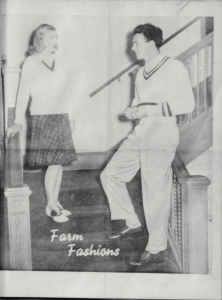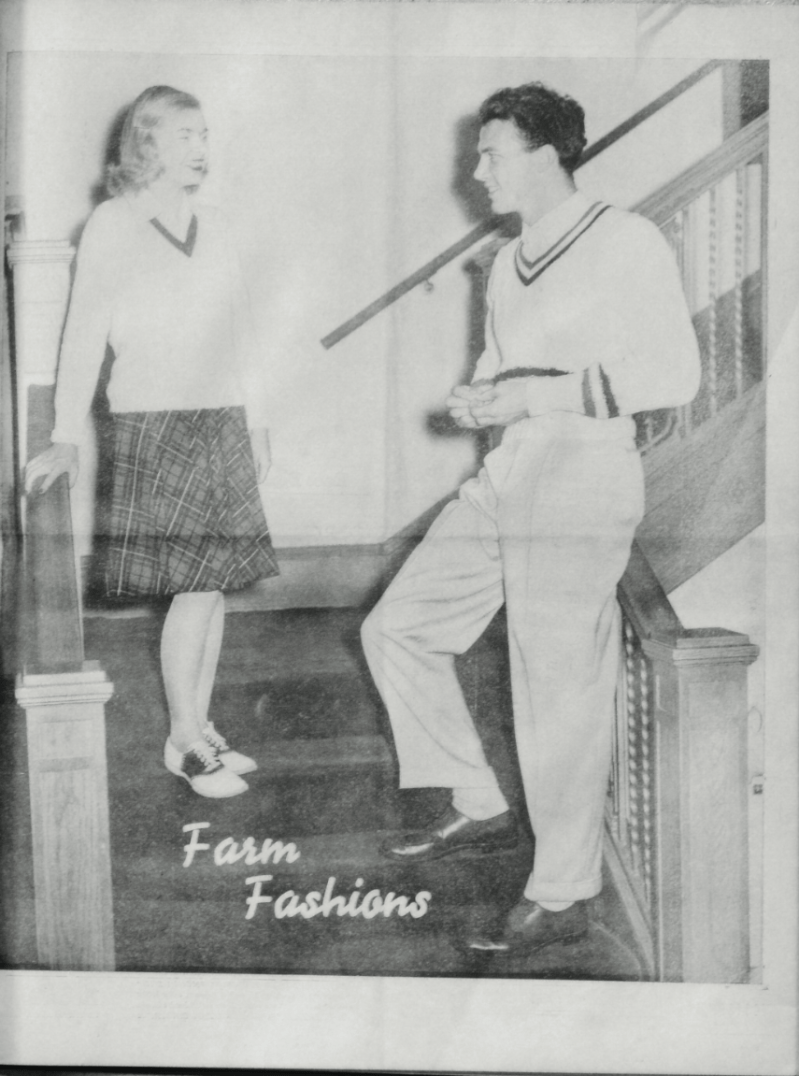A fashion-themed edition of The Daily appeared on Wednesday, Nov. 12, 1941. Below are two editorials that ran that day.

Prospectus
“You can always tell a Stanford woman, but you can’t tell her much.”
This flip cliché has been applied many times to many situations. It is not this writer’s intention to chart the nature and extent of its truth. Specifically, however, we feel that it is valid with regard to fashion.
It is hard to believe that any woman on the Farm rushes to check her attire with the latest Vogue of Harpers or even, more leisurely, to peruse them studiously for “hints.” And it is insane to conceive of a typical Stanford woman eagerly scanning theses pages for guidance in dressing.
She has high fashion standards and what she doesn’t know she is sure is not important.
She may be wrong, but she’s never in doubt.
With these characters in mind the editor and staff of the current fashion edition of The Daily have set about telling the Stanford woman not what should or will be worn, but what is actually being worn and what is available to her.
— R.M.
Skirt Length Foil Experts; To Stay Short
Rumors are rampant that women’s dresses will soon become longer. From the historical viewpoint this forecast seems very unlikely. Instead, they shall probably remain short until the war crisis is over, if history follows its repetitious habits.
For centuries clothes have been a barometer of the times. In the Grecian era men’s clothes were short to fit the active sports in which they loved to participate. In the Middle Ages the clothes were long to hide the body that the Church thought should be disregarded. The Renaissance brought an era of extremely elaborate clothes, suitable to the formal court life of the times. And so on through the ages.
During the 20th century clothes have changed radically. Until 1915 they were long, but the first World War brought in ankle-length dresses. Women could not have the necessary cloth and money to get yards of material. Then there was a short period after the War when business was booming as a temporary reaction. Skirts went down a little again; however, this soon changed as we entered into the depression of 1929.
As we edge into the second World War, hems have edged up too. History makes it probably that we shall not lengthen them again until times become more settled. A silk shortage is already evident, and there may be other fabric shortages.
Unless history fails to repeat itself — for the first time — we had better become used to knees, good, bad and indifferent.
Contact Josie Hodson at jhodson‘at’stanford.edu.
